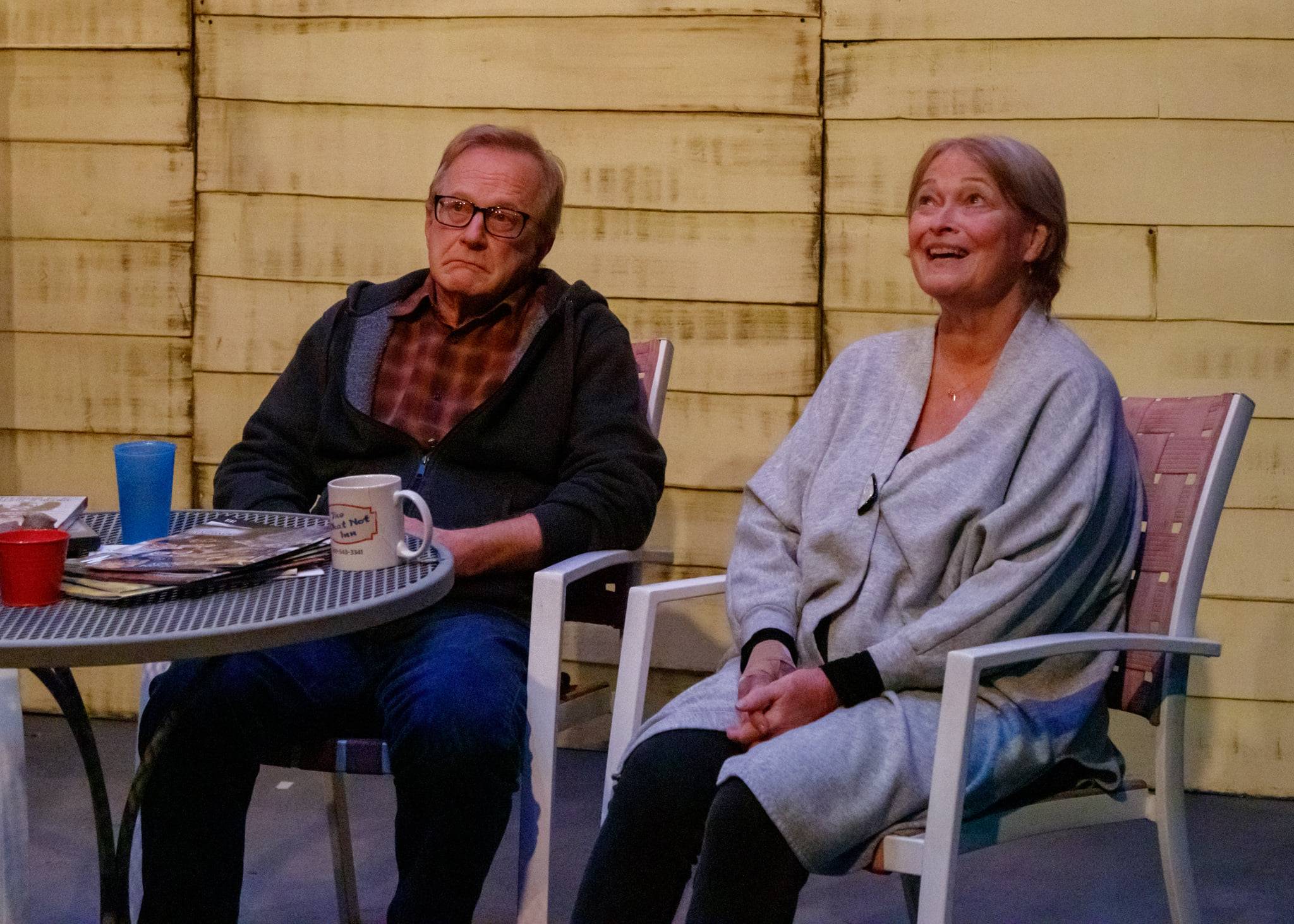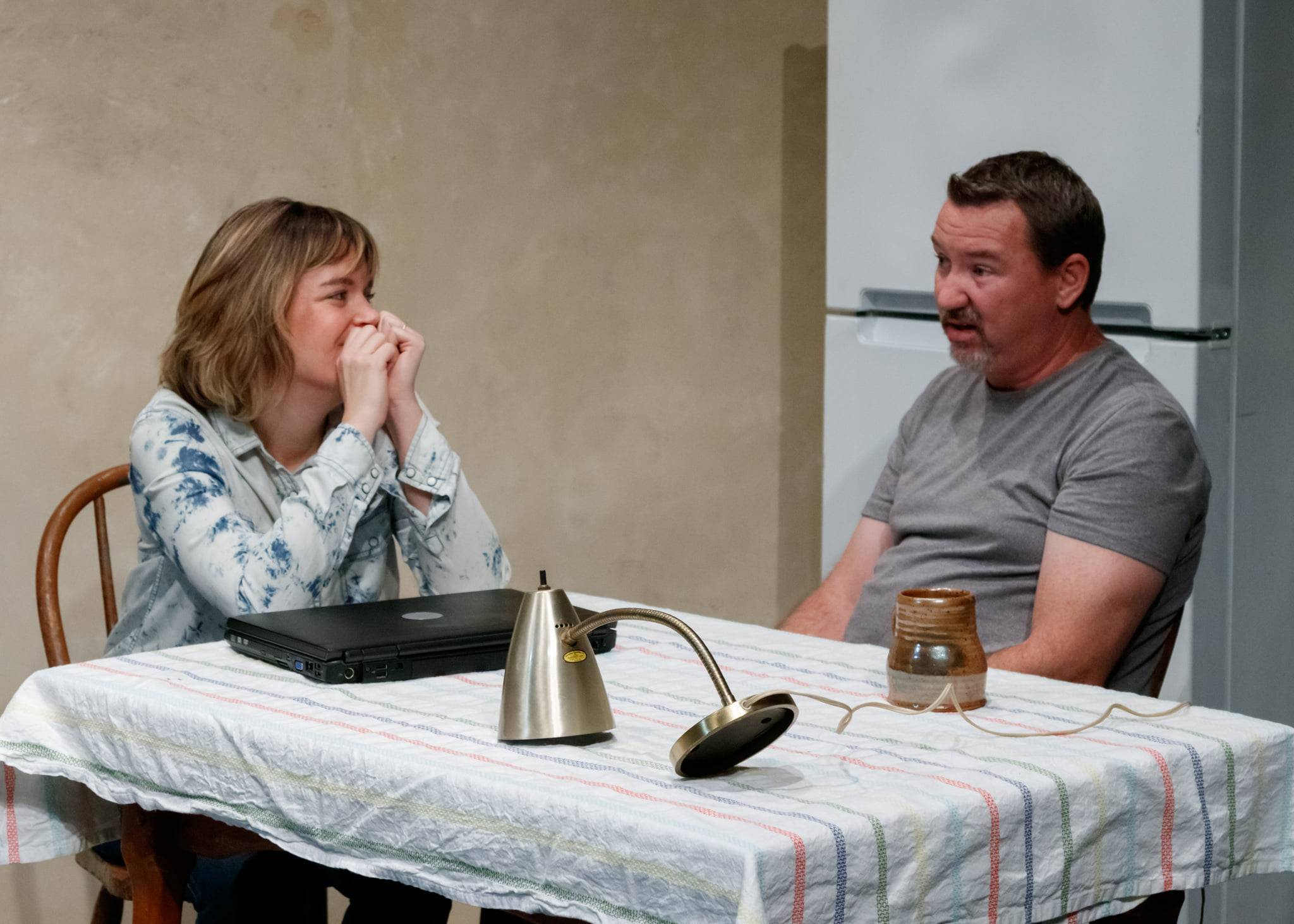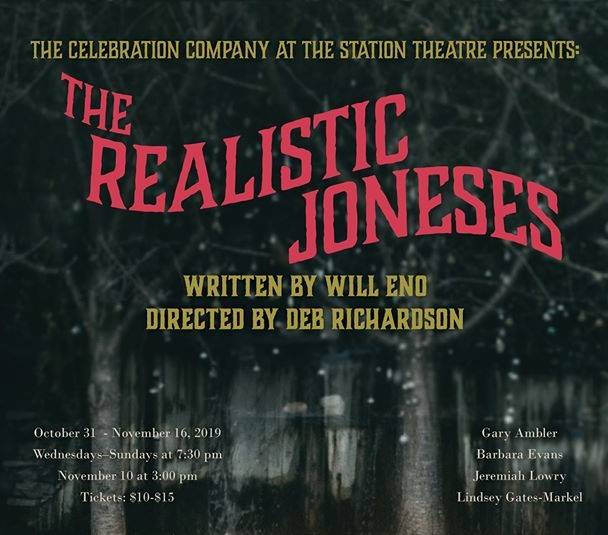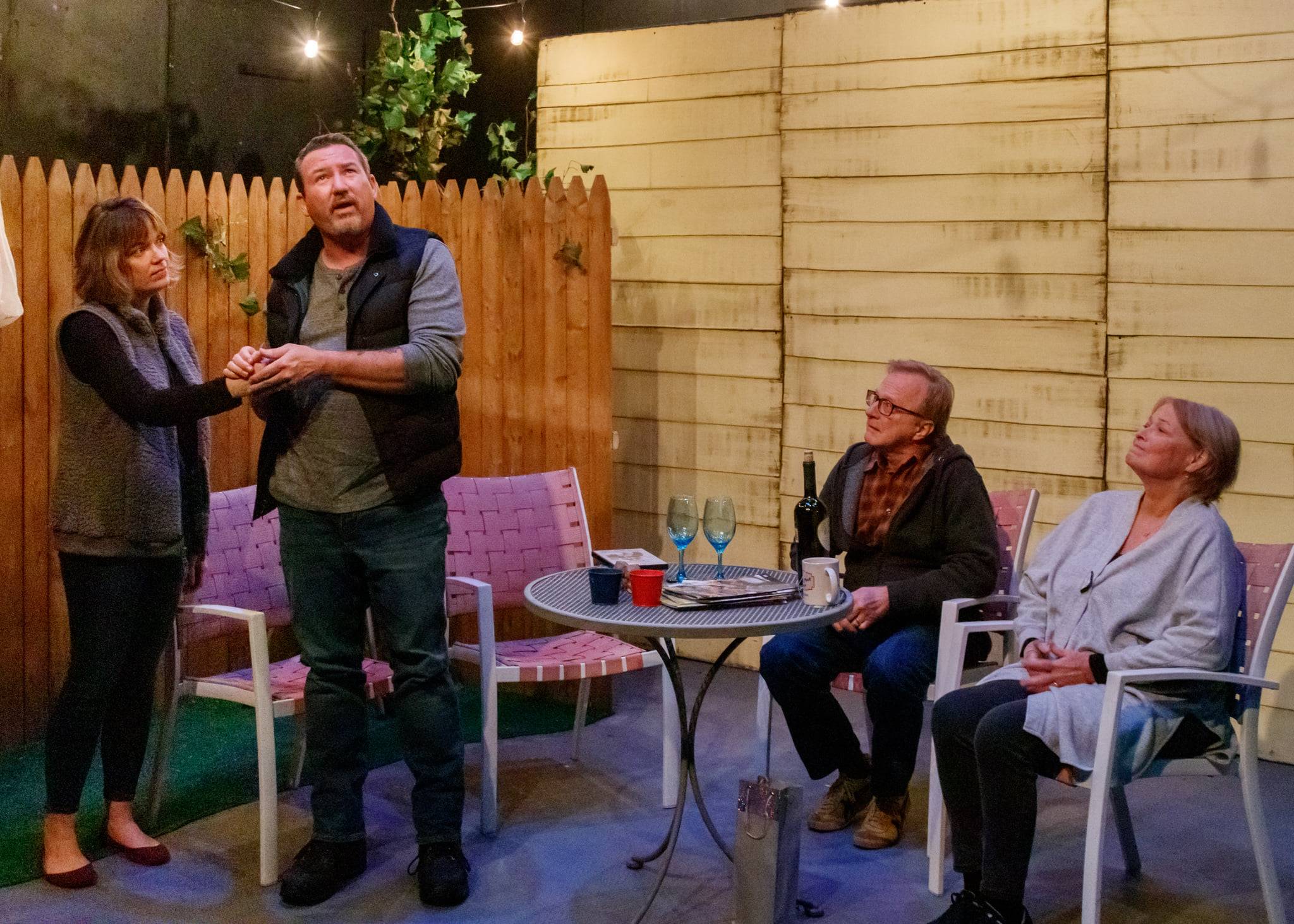Moving is unbearable. The stress puts a huge wrench on your life, on top of all the other wrenches of various sizes that we carry around on our backs. We try to balance our wrenches on all fours as we straddle and strain, the weight dispersed unevenly. Sometimes it seems like the wrenches just pile and pile one on top of the other. If you take one split misstep, they clatter and clang to the floor.
Instead of attending The Realistic Joneses on opening night as I had originally intended, the big moving wrench fell right onto my pile of wrenches and crushed my spine. I spent the week trying to pick up the pieces.
A week later than anticipated, I was finally able to see the Joneses in action at the Station Theatre in downtown Urbana. It was a chilly Thursday evening with a modest crowd, but I had a complimentary cup of decaf coffee and an evening of theatre to warm me up.
I found myself silently chuckling at the coincidence of moving as the plotline itself in the opening scene. The newest inhabitants of their small town in New England mountain country, John and Pony Jones (Jeremiah Lowry and Lindsey Gates-Markel) introduce themselves and a bottle of red wine to their neighbors, Bob and Jennifer Jones (Gary Ambler and Barbara Evans). In an evening exterior scene lit by friendly hanging bulb lights, awkward conversation ensues.

Each of the Joneses have a pile of wrenches on their backs, the wrenches often invisible to one another. And despite their generational differences, the Joneses and the Joneses find themselves with a little too much in common. Both John and Bob suffer from a degenerative disease, unbeknownst to one another. Pony and Jennifer both find themselves in caretaker roles, but unable to provide adequate emotional and physical comfort that their respective partners require. As a result, John and Jennifer grow more intimate emotionally, while Pony and Bob dive into physical intimacy headfirst. The wrenches begin to plummet.
It really is fascinating to see couples at different points in their lives handling invisible illness. The internal and external strife each Jones goes through allows for an interesting plot, despite playwright Will Eno’s particular writing style that is rather strange to the ear. While realism is the style of the play, the characters aren’t written quite realistic at all. Their interactions are far from what you’d actually see go down in a grocery store or hear from a backyard gathering.
Luckily director Deb Richardson collected a group of seasoned Station actors to breathe life into Eno’s portraits of characters. Barbara Evans’ portrayal of Jennifer was a huge highlight of this production. She makes your heart break over and over as she struggles to find a connection with her husband Bob, who sets his sights on Pony. Gary Ambler brought a subdued energy to Bob and it was refreshing to see him in a role where he was able to flex a different side of his acting abilities. Lindsey Gates-Markel’s Pony had a tragic bubbliness to her despite her fragility. Her bubbles are pink, but when popped they splutter black liquid.
I was highly impressed with Jeremiah Lowry’s portrayal of John Jones. Displaying sociopathic tendencies and the scary ability to manipulate others to keep his secrets, I wanted to go up onto the stage give him a big hug and tell him it was going to be okay. It is no surprise to me that Michael C. Hall of Dexter fame was the one to originate this role.

The design of the production was cohesive with set design by Niccole Powers, lights by Brian Hagy, props by Strelle Wang, costumes by Ellen Strauser, and sound elements designed by Austin Fuoss. The play’s 2 hour and 10 minute runtime could have been eased up and the production amplified by snappier transitions with relevant sounds to guide them.
The production uses the “typical” Station proscenium set-up with the action on one side and audience on the other. A more immersive audience experience might have better served this script. Perhaps a ¾ thrust with audience on three sides and action in the middle could have added more dimension to the staging.
Some of my fellow Smile Politely contributors recently wrote a recent opinion piece regarding the closure of the Art Theater in downtown Champaign. In this piece, they state:
“With its closure, The Art Theater leaves a gaping hole in arts and culture events.”
This phrase was a bit disappointing for me to read.
There is no denial that it’s awful to lose a staple with such grandeur as the Art. However, let us not forget that the Station Theatre has been providing the C-U community quality arts/cultural experiences for nearly 50 years. And before it was the Station Theatre, Samuel Beckett’s work was experimentally explored — in the era of Beckett himself — in this building that was then known as the Depot Theatre. It has been an artistic home for many local legends, among one of the most notable being Nick Offerman. Don’t sleep on this little theatre, C-U. It has so much to offer.

The Realistic Joneses
The Station Theatre
223 N Broadway Ave., Urbana
October 31st through November 3rd, 6th through 10th, and 13th through 16th.
All shows at 7:30 p.m. with the exception of November 10th’s matinee at 3 p.m.
Order tickets online here
Photos from the Celebration Company at the Station Theatre’s Facebook page








